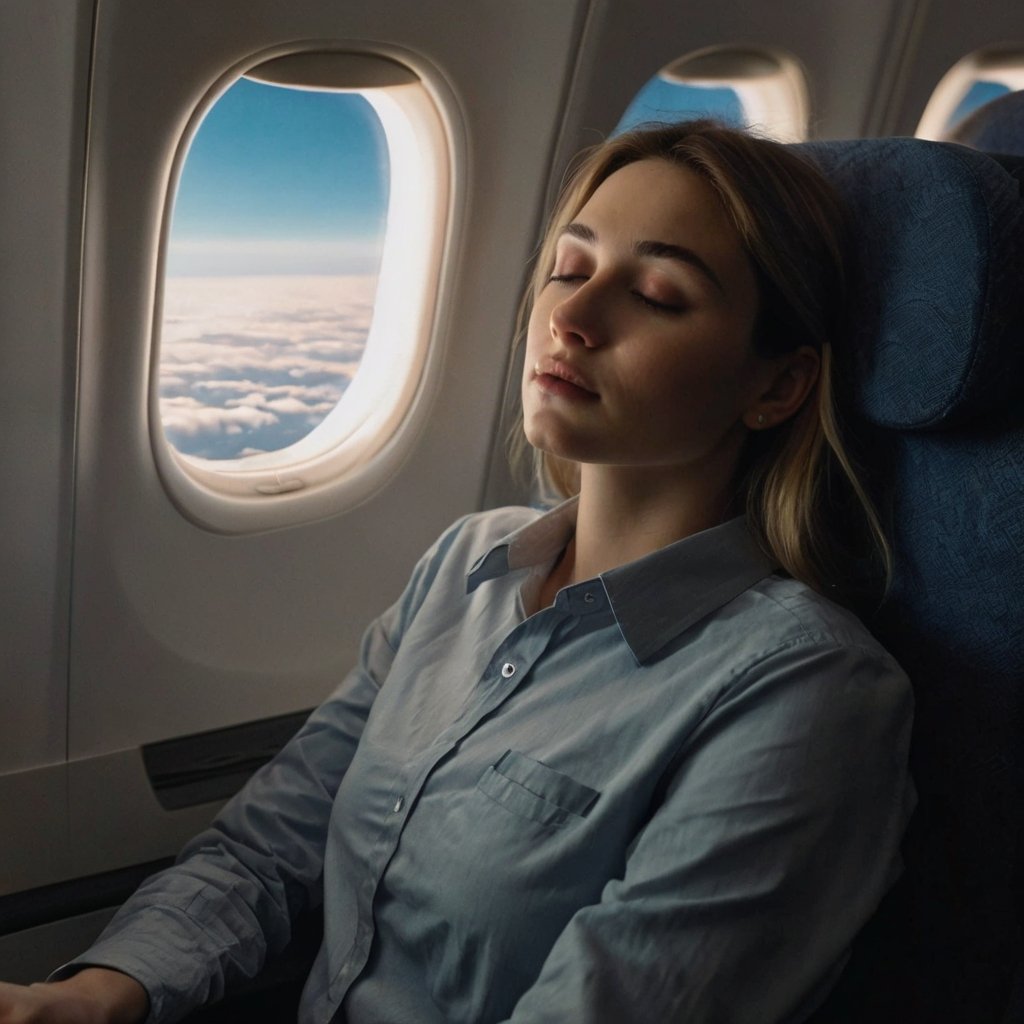Ugh, a long flight. Just the thought makes you want to pull your hair out. But hey, we all gotta get there, right? And let’s be honest, a good night’s sleep on that plane can make all the difference. So, how do you conquer those cramped seats and turn that metal bird into your personal slumber sanctuary? Let’s dive in!
The Struggle is Real: Why Sleeping on a Plane is a Beast
First off, let’s acknowledge the enemy: airplane travel. It’s designed for speed, not sleep. Tiny seats, cramped quarters, the constant hum of the engines, the weird air pressure changes – it’s a recipe for restless nights. And that’s before we even get into the whole jet lag thing!
My own personal hell? A 14-hour flight to the other side of the world. I swear, the only thing more comfortable than the seat was the overhead bin. But I’m here to tell you, it can be done. You can get some shut-eye.

Pre-Flight Prep: Setting Yourself Up for Success
Before you even think about boarding, you need a game plan. This isn’t just about your clothes, folks, it’s about your body’s internal clock.
- Hydrate, but Don’t Overdo It: Dehydration is a major sleep saboteur. Drink plenty of water in the days leading up to your flight, but avoid chugging it right before boarding. You don’t want to be making bathroom runs every hour. A good rule of thumb is to sip water throughout the flight.
- Pack Your Comforts: This isn’t about fancy pillows, although a neck pillow can be a lifesaver. Think cozy socks, a light blanket, and maybe even a travel-sized eye mask. A comfy pair of pajamas will do wonders for your sleep comfort.
- Plan for Motion Sickness: If you’re prone to motion sickness, consider taking medication before the flight. Motion sickness can seriously disrupt your sleep plans.
- Choose Your Seat Wisely (If Possible): Aisle seats are often the preferred choice for those wanting to get up and stretch. But if you prefer a bit more space, window seats are often better. The key is to consider the noise and your sleep preferences.
In-Flight Strategies: Mastering the Art of Airplane Slumber
Once you’re airborne, it’s time to put your strategies into action.
- Embrace the Darkness: Eye mask? Essential. Light is your enemy. Keep those eyes closed and block out the glare from the overhead lights.
- Noise-Cancelling Headphones: These are your new best friends. Drown out the engine noise, the chatty passengers, and the general chaos of the air. Amazon noise-cancelling headphones.
- The Power of a Weighted Blanket (or a Scarf): A weighted blanket can provide a calming sensation, mimicking the feeling of being held. A cozy scarf might offer the same effect.
- The Power Nap (and When to Skip It): A short power nap can be a lifesaver. But don’t overdo it! Long naps can disrupt your natural sleep cycle.
- Move Around (a little): Even a few stretches and walks around the cabin can help circulation and wake you up if you feel too sleepy.
Frequently Asked Questions (FAQs)
- Q: What if I’m stuck in an uncomfortable seat?
- A: Try adjusting your posture, using a neck pillow, or bringing a small pillow for extra support. If possible, ask a flight attendant if there’s a way to switch seats.
- Q: I’m just too anxious to sleep on a plane!
- A: Sometimes it’s just the anxiety of being on a plane that keeps you up. Try deep breathing exercises, listening to calming music, or bringing a book or magazine to keep your mind occupied. Sometimes, it’s just about focusing on something else.
- Q: What about jet lag?
- A: Jet lag is a real beast. Try to adjust your sleep schedule before the flight to match your destination’s time zone. After the flight, try to expose yourself to sunlight as soon as possible to help regulate your body clock.
Bonus Tip: The Pre-Sleep Ritual
Before you close your eyes, try a pre-sleep ritual. This could be anything from a warm shower to a calming cup of herbal tea. A relaxing ritual can signal to your body that it’s time to wind down.
Final Thoughts
Sleeping on a long flight isn’t impossible, it just takes a bit of planning and the right mindset. By incorporating these tips, you can significantly improve your chances of getting a good night’s sleep in the air. And remember, a well-rested traveler is a happy traveler.


